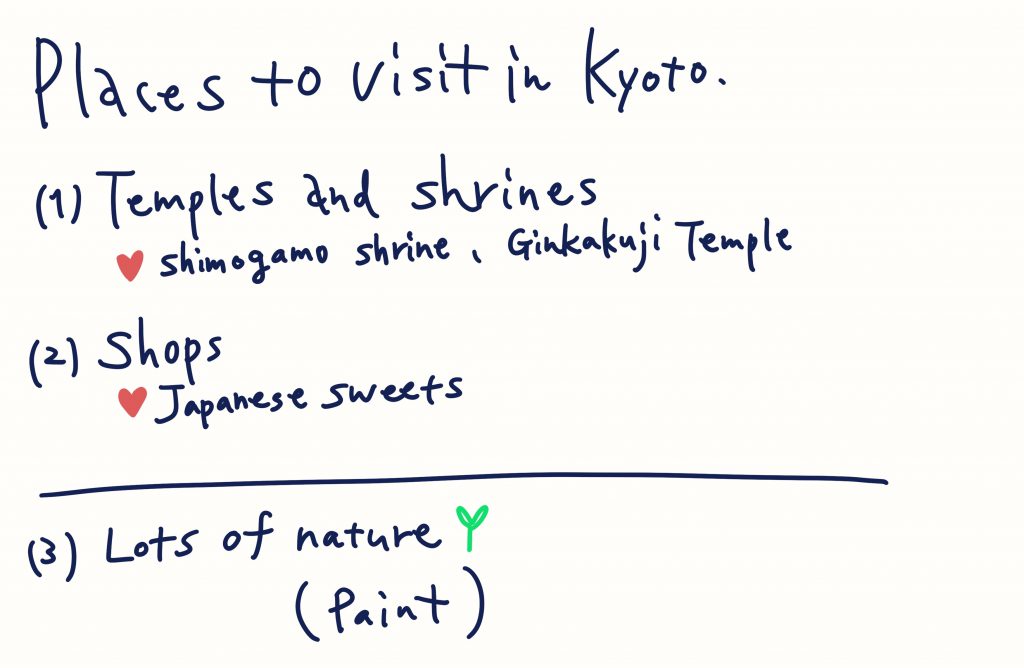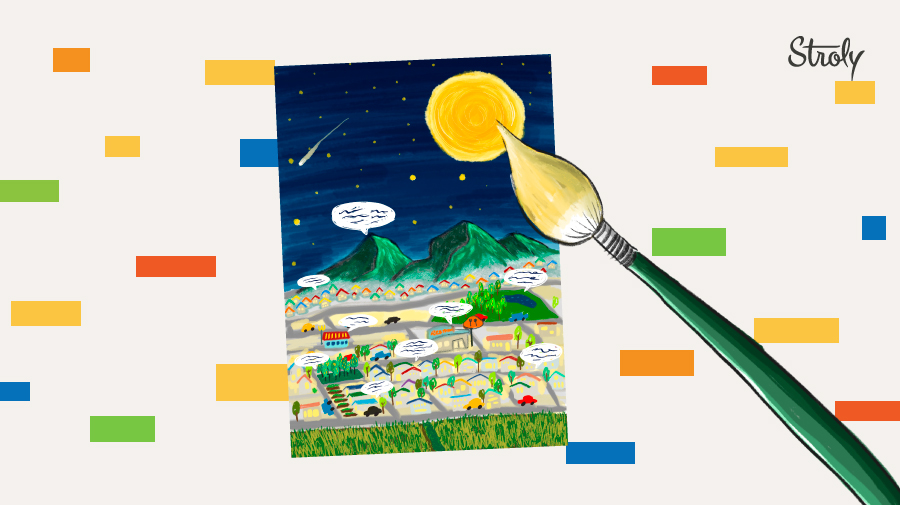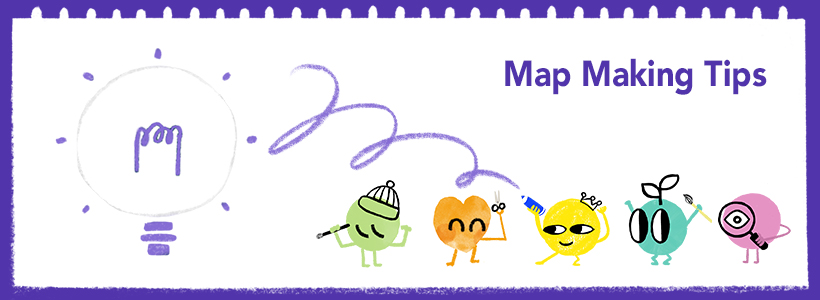Hello, this is Kaoru.
In the previous blog, we talked about categorizing maps into three groups based on their goals: “General interests,” “Theme oriented,” and “Personal stories and Historical facts.”
Today, I’d like to share some advice on creating each type of them.
(For your review, here is the link of our previous blog about the 3 groups:
When you are lost in creating a map…~ 3 questions that can help you clarify the theme of your map~)
Tips and Tricks for Making a General Interests Map
The first question to ask yourself when you want to create a map that shows some of the beauty and attractions of a place is “What is the main message I want to tell the audience?”
Once you carefully select it, keep it in your mind.
(As I create a map, I often get ambitious my results and lose the direction I am supposed to heading to.)
You must imagine WHAT and TO WHOM you want to share your map.
If you come up with a couple of important ideas or messages you want to share with, try to prioritize them.
For example, let’s say that I make a map of places to visit in Kyoto that might be interesting for women in their 20s to 30s. The first thing I would do is to prioritize my recommendations.

In this way, I can have a more precise idea of what the map will be.
To sum up, I will create a map that features Kyoto’s beauty and charm, focusing mainly on temples and shrines. So organizing your thoughts and building a clear objective for your map is essential to deliver a simple and straight forward message to your audience.
Remember, if you skip this step, your message won’t be delivered effectively.
Here is my advice on creating a General Interests map:
- Prioritize items that you want to recommend to the audience.
- Write down text information in easy-to-understand words.
- Design a map based on your audience’s preference.
- Balance out items you have in your map, like illustrations. (Think about what things you want to emphasize more than the others.)
- Focus on more significant perspectives like targeting whole areas rather than focusing on small locations.
- If you are working on a map about a seasonal event, include the season in your theme to make it cohesive.
- Accuracy and simplicity in your information is important!
- Reflect on the sense of orientation for you or locals. It’s okay if you don’t follow the idea of “north-up” when your target audience feels it’s natural to use other ways. In that case, make sure that they can follow your map without getting lost.
- Mention local rules or etiquettes as part of the usage for your map. For example, in Kyoto you aren’t allowed to take pictures of a Maiko or a Geiko, so explain why.
- Be specific and selective about who you want to make happy with your map.
- Organize information based on your target by categorizing it into MUST and BETTER.
- Be consistent with the theme.
- Avoid any suggestions that seem to be too hard to make happen. For example, if you want to include a route that takes 30 minutes, don’t present it as a “15 minutes route.”
- Share your “OWN” experience or story.
- Keep in mind that a personal story based on your experience has a significant impact on the content’s credibility.
- Try to be SUBJECTIVE rather than objective even if the information isn’t organized well.
- Be selective—no need to be fair.
- Brain-dump the episodes or information, and make a list. Forget about the audience and pick up what you want to include.
- Find a way to present your intention of creating the map to the audience.
(For example, create a character that introduces you or write down your message to the audience.) - Sometimes writing comments or texts directly on a map is useful to draw interest.
- It’s a good way to set a title or write down descriptions on your map to support your idea.
- Don’t worry if you omit some small streets. You may think that some users could get lost, but Stroly can take care of the little details using its mapping feature.
Tips and Tricks for Making a Theme-Oriented Map
My first piece of advice for creating this type of map is this: “This map is NOT for everyone. Focus just on your audience.”
When you try to create a map to appeal to many audiences, the map will have unnecessary information and will lose its focus.
Instead of listing every piece of information, think of your audience and be specific and selective. Then organize the content based on your audience’s preference by imagining what scenes they will use your map for.
For example, this map of Tijuana, Mexico, is targeting people who enjoy tacos, and who are living in or near the city.
It may also be a good idea to pretend you’re a top-notch concierge at a luxury hotel who tries to meet a particular customer’s needs and wants.
Here is my advice on creating a Theme-oriented map:
Tips and Tricks for Making a Personal Stories and Historical Facts Map
A map about Personal stories and Historical facts has totally opposite characteristics from a theme-oriented map.
When you create a map regarding personal stories and historical facts, forget about the target. Think of a map as a canvas with location information as the focus.
You do have the chance to share your feelings or ideas in the general composition of the map or the shape. No need for formalities here. Just let out your words and use your creativity.
Here is a list of my advice on creating a map of Personal stories and Historical facts for you.
There are various types of maps out there. I hope these tips and tricks help you to create a new map.
That’s all for today. Thank you for reading!



